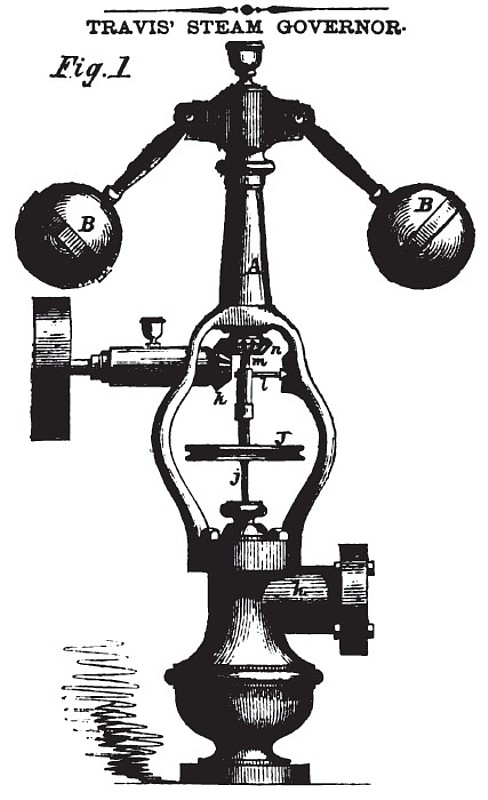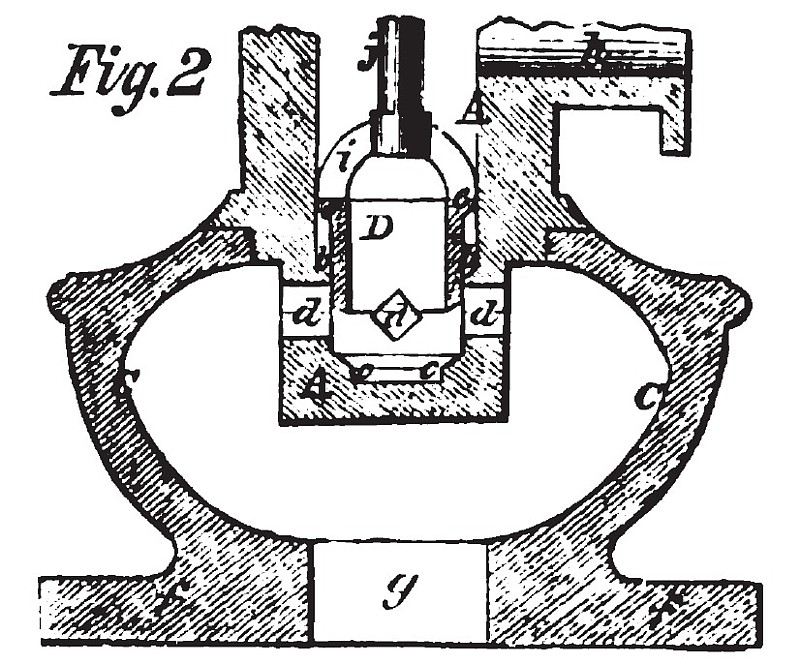|
Title: |
1859 Article-Johnson & Emerson, Travis Steam Governor |
|
Source: |
Scientific American, V 1 #19, 05 Nov 1859, pg 320 |
|
Insert Date: |
2/27/2015 1:59:28 PM |
The engravings which we here present illustrate a governor for steam-engines, which comes to us from Illinois. Fig. 1 is a perspective view of the whole, and Fig. 2 a vertical section of the lower portion, showing the arrangement of the valves. The steam enters from the boiler by the pipe, h, and passes into the steam-chest through the opening, g. A is a hollow cylinder, with four openings into it, placed at equal distances from each other, with their angles horizontal and vertical, as shown. At the bottom of this cylinder, and on a flange above the openings, are fitted the seats, c c and d d, for the short cylinder or valve, D. The valve, D, is hollow, being supported by the bridge, s, and the steam enters its top and passes out of its bottom. The higher the valve, D, is raised, the larger is the portion of the holes, b b b, which is opened. The rod, j, passes up through a stuffing-box into the hollow cylinder, k (Fig. 1), with which it is connected by a screw in such way that it may be raised or lowered by turning the wheel, J; the hollow cylinder being prevented from turning by means of the pin, l. The bevel gear, n, is fastened upon the lower end of a hollow cylinder which passes up through the inside of the column, E, and has two wings, o p, attached to its upper end, so that its rotations carry around the balls, B B. The spindle, m, extends upward through the hollow cylinder which carries the balls, and has a groove turned around it near its i which groove play the inner ends of the arms of the balls, these arms working on the fulcrums, r r, at which points they are bent downward. From this arrangement, it will be seen that, as the balls expand, the rod, m, is pushed downward, carrying down the rod, j, and partly closing the valve; while a depression of the balls lifts the rods, m and j. and opens the valve more widely. By turning the wheel, J, the rod, j, is screwed a greater or less distance into the hollow cylinder, k, and thus the valve may be either entirely closed or adjusted to any; opening requisite for the desired velocity.
The patent for this invention was granted to Nathan C. Travis, of Alton, Ill., Oct. 11, 1859. Persons desiring further information in relation to it may address the inventor at Alton. Johnson & Emerson, of the same place, have rights for sale for the New England and middle States.
Patent #'s 25,794 & RE 1,051 |
|
 1859 Article-Johnson & Emerson, Travis Steam Governor
1859 Article-Johnson & Emerson, Travis Steam Governor
 1859 Article-Johnson & Emerson, Travis Steam Governor (Sectional View)
1859 Article-Johnson & Emerson, Travis Steam Governor (Sectional View)
|
|